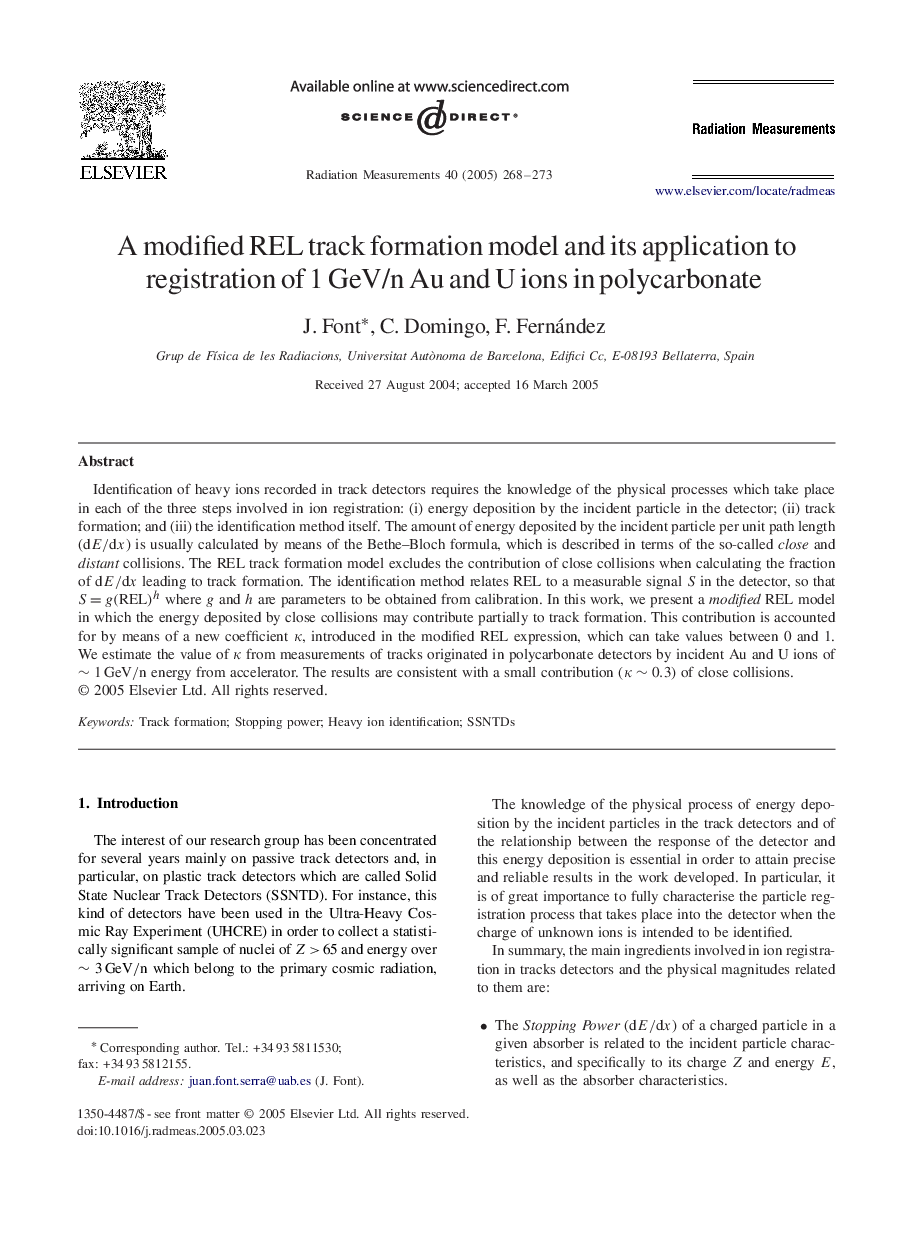| Article ID | Journal | Published Year | Pages | File Type |
|---|---|---|---|---|
| 9875904 | Radiation Measurements | 2005 | 6 Pages |
Abstract
Identification of heavy ions recorded in track detectors requires the knowledge of the physical processes which take place in each of the three steps involved in ion registration: (i) energy deposition by the incident particle in the detector; (ii) track formation; and (iii) the identification method itself. The amount of energy deposited by the incident particle per unit path length (dE/dx) is usually calculated by means of the Bethe-Bloch formula, which is described in terms of the so-called close and distant collisions. The REL track formation model excludes the contribution of close collisions when calculating the fraction of dE/dx leading to track formation. The identification method relates REL to a measurable signal S in the detector, so that S=g(REL)h where g and h are parameters to be obtained from calibration. In this work, we present a modified REL model in which the energy deposited by close collisions may contribute partially to track formation. This contribution is accounted for by means of a new coefficient κ, introduced in the modified REL expression, which can take values between 0 and 1. We estimate the value of κ from measurements of tracks originated in polycarbonate detectors by incident Au and U ions of â¼1GeV/n energy from accelerator. The results are consistent with a small contribution (κâ¼0.3) of close collisions.
Related Topics
Physical Sciences and Engineering
Physics and Astronomy
Radiation
Authors
J. Font, C. Domingo, F. Fernández,
